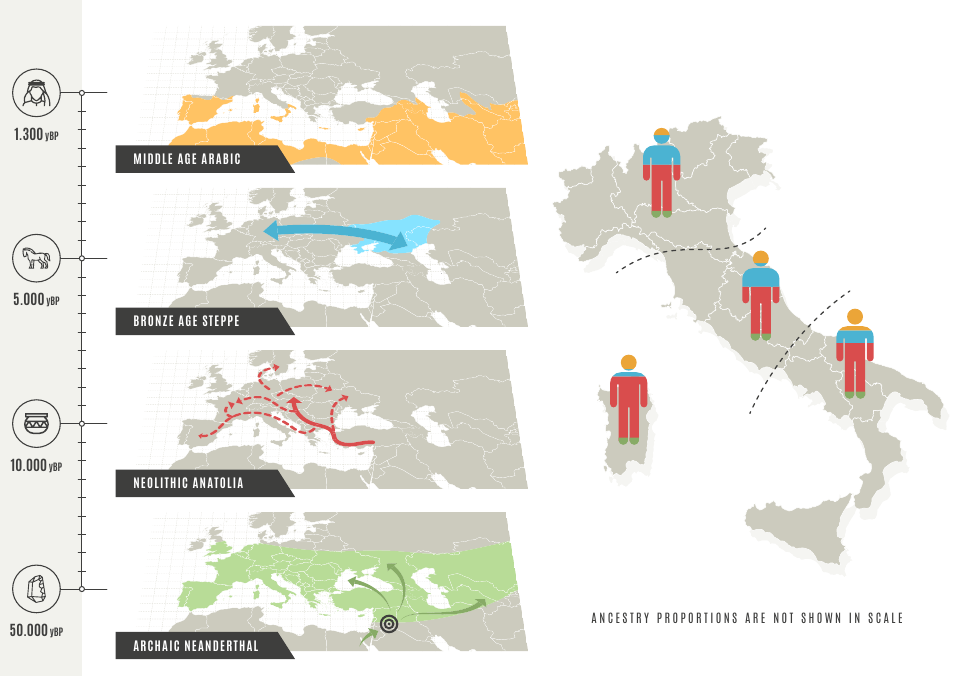The archaic, ancient and modern history of Italy
Supervised by Cristian Capelli, and with Alessandro Raveane, Serena Aneli, Anna Olivieri e Alessandro Achilli
The genetic history of Italy largely overlaps with the European one. The explosion in the production of genetic data from ancient or archaic human remains, has provided a crucial role in the understanding of the population movements that have characterised the continent.
Very (not) shortly, European people’s genome make-up has been reshaped mostly (but not only!), by a small number of important demographic or admixture events which occurred in the last 50,000 years. First, the pioneer Neanderthal genome analysis in 2009 found that, irrespectively of the scientists believe at that time, our ancestors mated with our Neanderthal cousins, as soon as they stepped out of their African cradle, and therefore all humans except Africans (although some of them may harbour some fragments due to a later back to Africa), harbour a signature of this encounter interspersed in their genomes. Several other researches have now discovered that these admixture events may have been more frequent that previously known, and some of the genomes inherited by archaic hominins have biological impact still now. In the following millennia, a series of hunter-gatherers populations have inhabited the continent, with an almost complete replacement around 24,000 years ago, possibly as a consequence of the last Ice age. The invention of pottery, pastoralism and agriculture, approximately 11,000 years ago, led to an increase of population size, and a subsequent expansion of farmer groups. The first farmers from the fertile crescent expanded in Europe relatively quickly, and by the 5000BC farming practices were present in much of Western Eurasia. Genetically, virtually all Eurasian populations are characterised by fragments of genome resembling the one found in individuals from the Neolithic period in Anatolian. Curiously, Sardinians are the European people which are more related to the first Anatolian and European farmers.

Approximately 5000 years ago, a second “massive” migration of pastoralist populations from the Pontic-Steppe took place, from a population genetically simlar to individuals associated to the Yamna culture, which in turn trace their ancestry from Eurasian hunter-gatherers. This diffusion radically changed the genetic composition of European people, whose a large fraction of genome is a signature of this migration. Furthermore, this event has been associated with the introduction of the IndoEuropean languages in the continent, but also of a series of technological innovations, such as horses and wheel. Multiple more recent and localised events took place since the late Bronze age, adding the last touches to what we are now. However, the first genomic surveys aiming at the reconstruction of Italy ancestry, together with Neolithic and Post- Neolithic ancient DNA from Greece studies, were not fitting very well with these 3(+ archaic) model, with southern Italian groups showing a high affinity to Caucasus populations, similar to what observed for Greek Neolithic and Bronze age, suggesting that something from the East had a role in the genetic make-up of Italians.
Motivated by this “mistery”, we analysed 1600+ individuals from Italy, together with 5000+ from all over the world, with the aim of reconstructing the genetic structure of Italians, and the role of ancient and archaic admixture in the making of modern Italy. After three (!) years of work we have ended up with a pre-publication manuscript, which you can read here.